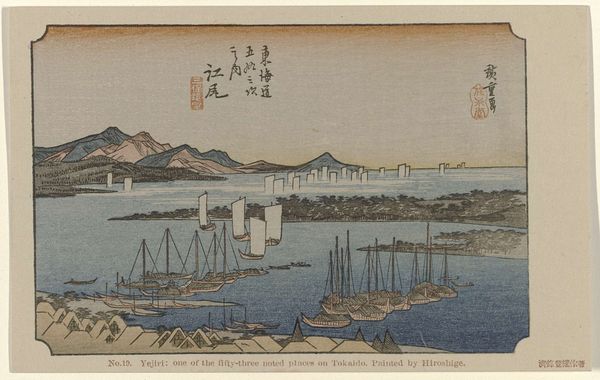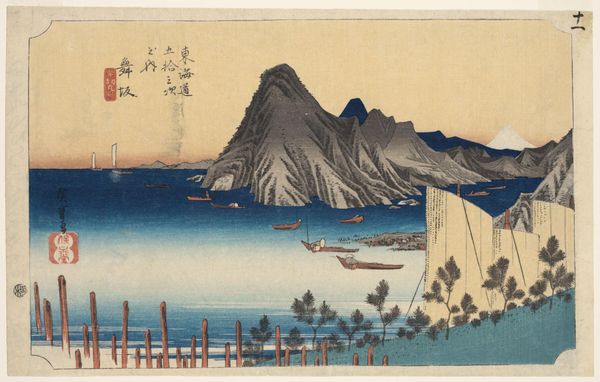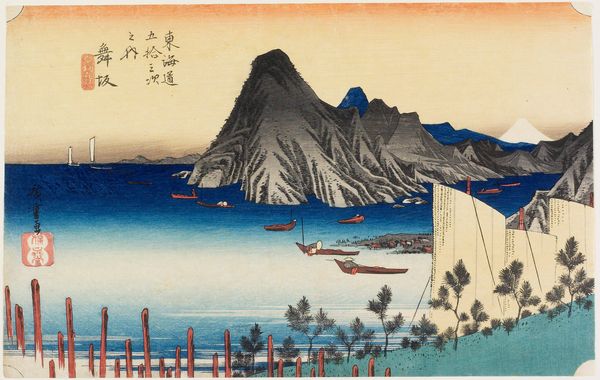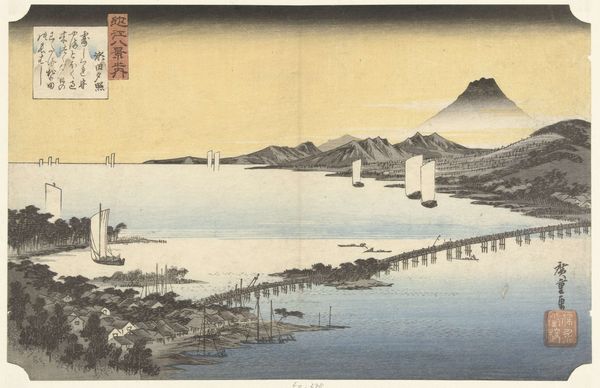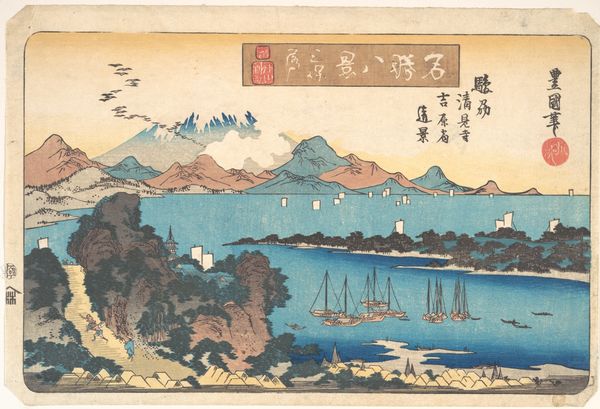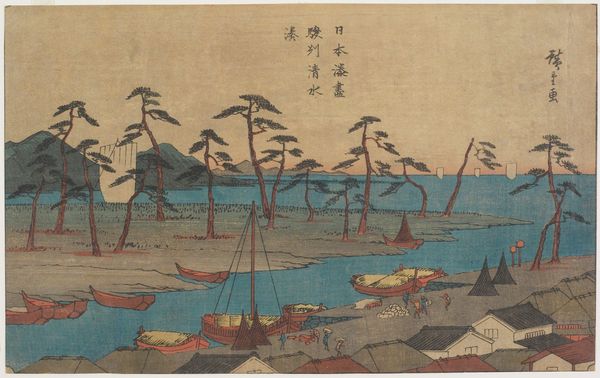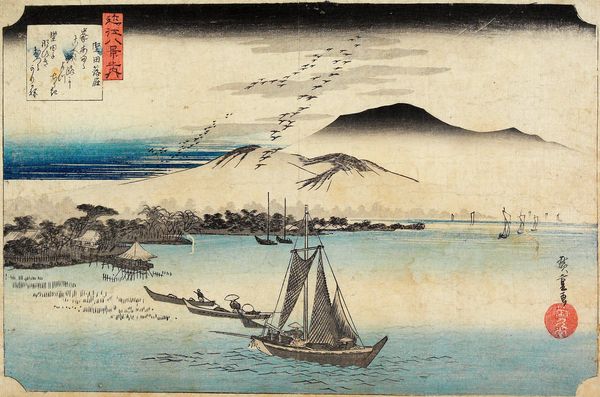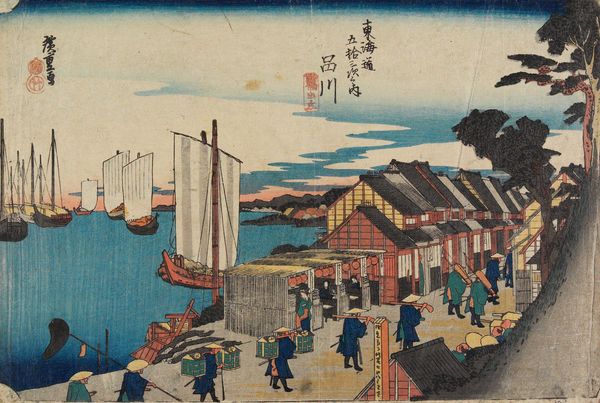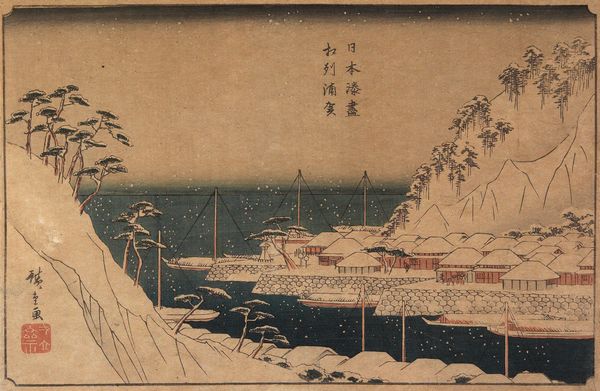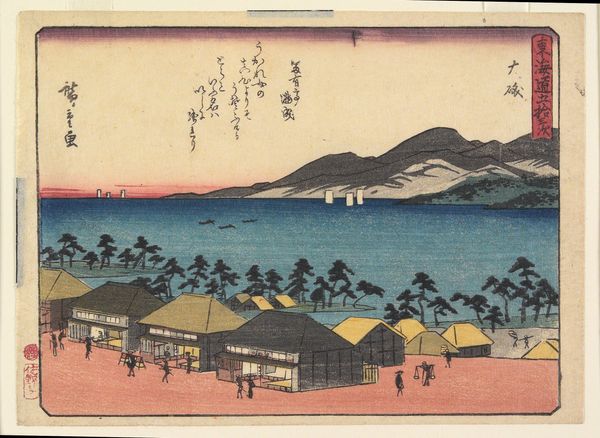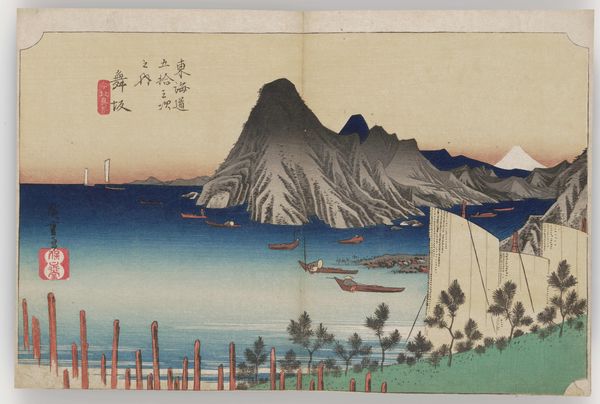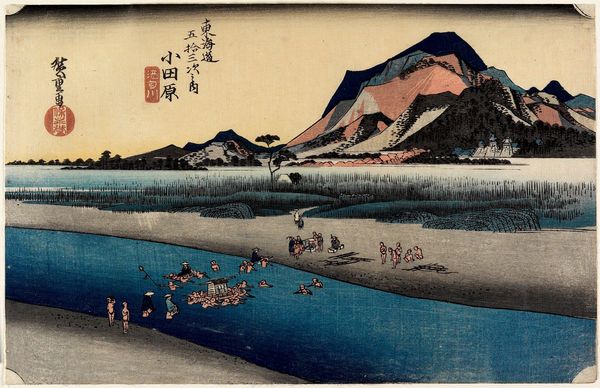
print, ink, woodblock-print
#
water colours
# print
#
landscape
#
ukiyo-e
#
ink
#
coloured pencil
#
woodblock-print
#
orientalism
Dimensions: 9 1/16 × 14 in. (23 × 35.5 cm) (image, sheet, horizontal ōban)
Copyright: Public Domain
Editor: So here we have Hiroshige’s ‘Ejiri’, a woodblock print from around 1832. The blues are so vibrant. It’s like looking out at a still, calm bay filled with fishing boats. What do you see in this piece beyond just a pretty picture? Curator: Beyond its undeniable aesthetic appeal, "Ejiri" offers a powerful glimpse into the complex socio-political currents of 19th-century Japan. Hiroshige's work, particularly within the *ukiyo-e* tradition, often served as a form of cultural documentation but was also deeply shaped by the political realities of the time. Consider the "floating world" imagery—it’s not merely escapism. Instead, how does it reflect the tensions between societal expectations and the desires of a burgeoning merchant class? Editor: So, you're saying it's not just a landscape, it’s a statement about class? Curator: Precisely! The focus on leisure, on travel, even within the constraints of artistic representation, speaks to a specific kind of access and privilege. Think about who could afford to commission or purchase these prints and the lives and aspirations they reflect. Furthermore, the very act of depicting specific locales, like Ejiri, contributes to the construction of a national identity but one filtered through a particular lens of power and representation. Whose story gets told? Editor: I hadn't considered that the idyllic scenery could also represent privilege and a certain viewpoint. It gives the print a whole new layer. Curator: Absolutely! It encourages us to think critically about the intersection of art, power, and representation and to consider whose perspectives might be marginalized or absent from the dominant narrative. It’s a reminder that even the most seemingly innocuous images can be deeply embedded in complex social and political structures. Editor: I’ll definitely look at these prints differently from now on! Curator: I'm glad to have shed light on art’s impact through the intersectional lenses of history, class, and politics.
Comments
minneapolisinstituteofart almost 2 years ago
⋮
From the famous series Fifty-three Stations of the Tøkaidø Road, this print represents Ejiri, the eighteenth station on the road, in modern-day Shizuoka Prefecture. The image shows a view of Miho, known for its pine-covered sandbar that projects into Suruga Bay. Looking eastward, towards Mount Fuji, Hiroshige depicted the evergreen pine grove as if floating on the bay. The white sails of the boats that crowd the bay make a beautiful contrast to the deep blue water. In the foreground is Shimizu, one of the busiest ports in Japan at that time. By showing many boats moored bow to bow and the rooftops of closely clustered buildings, Hiroshige hints at the liveliness of this port city.
Join the conversation
Join millions of artists and users on Artera today and experience the ultimate creative platform.
